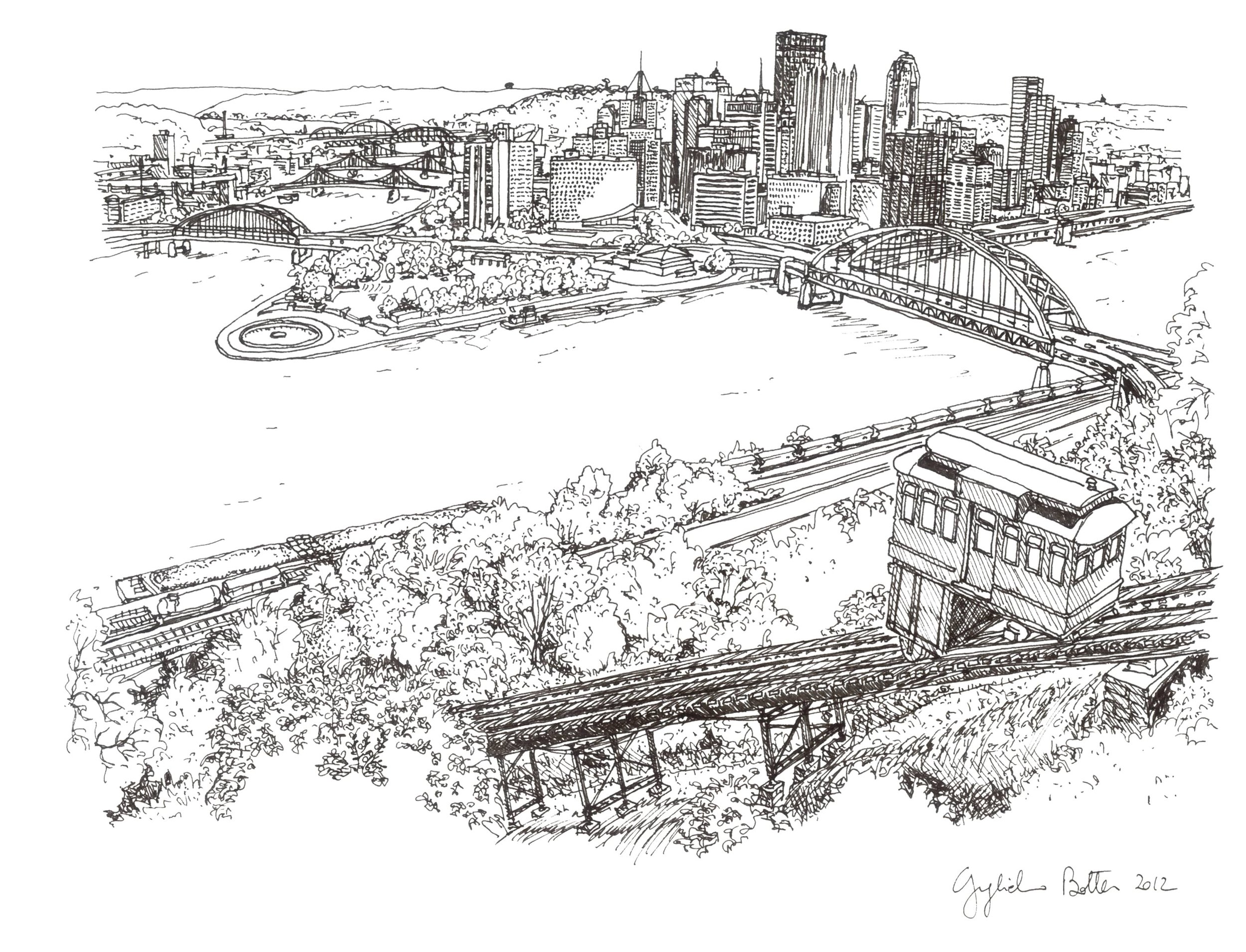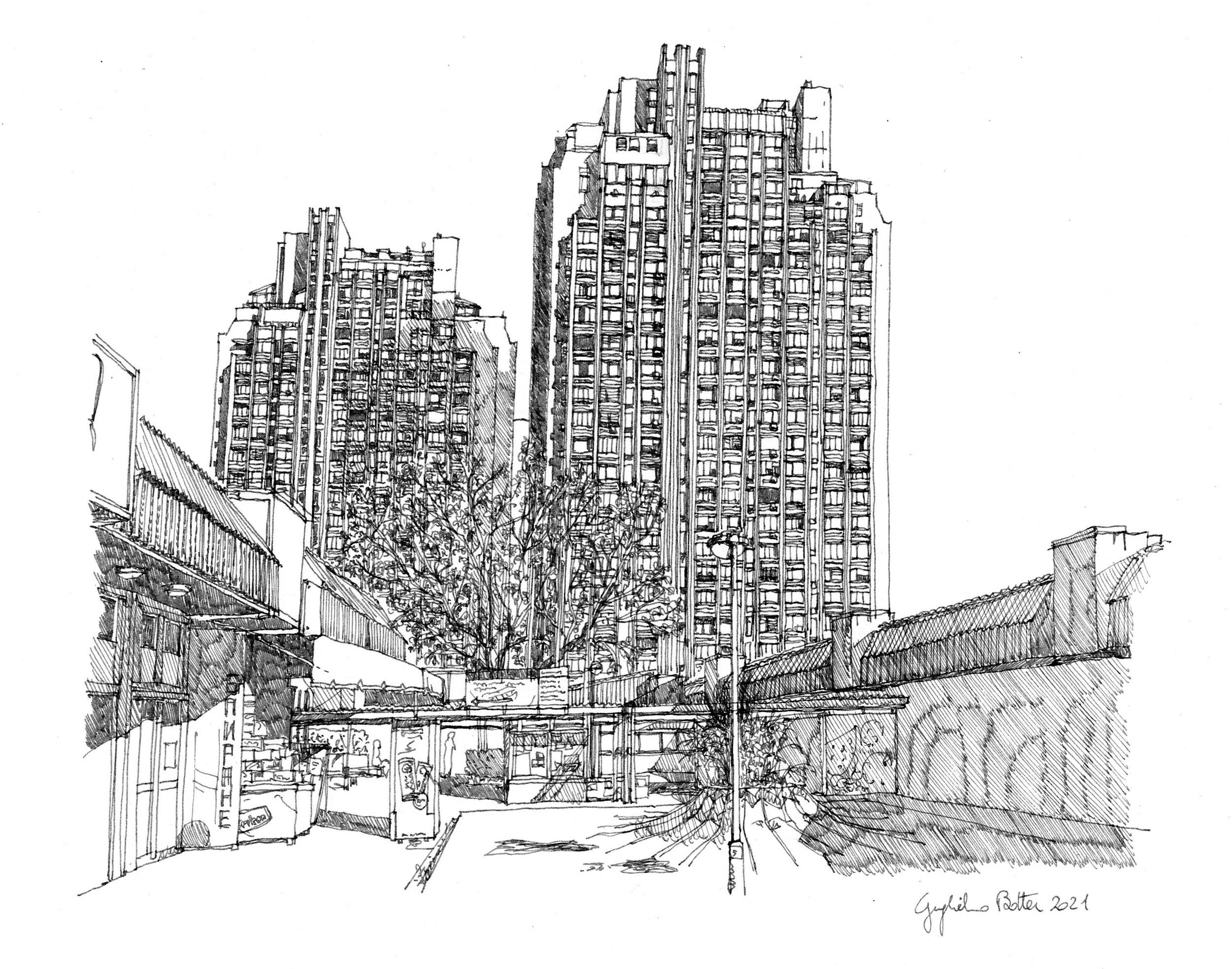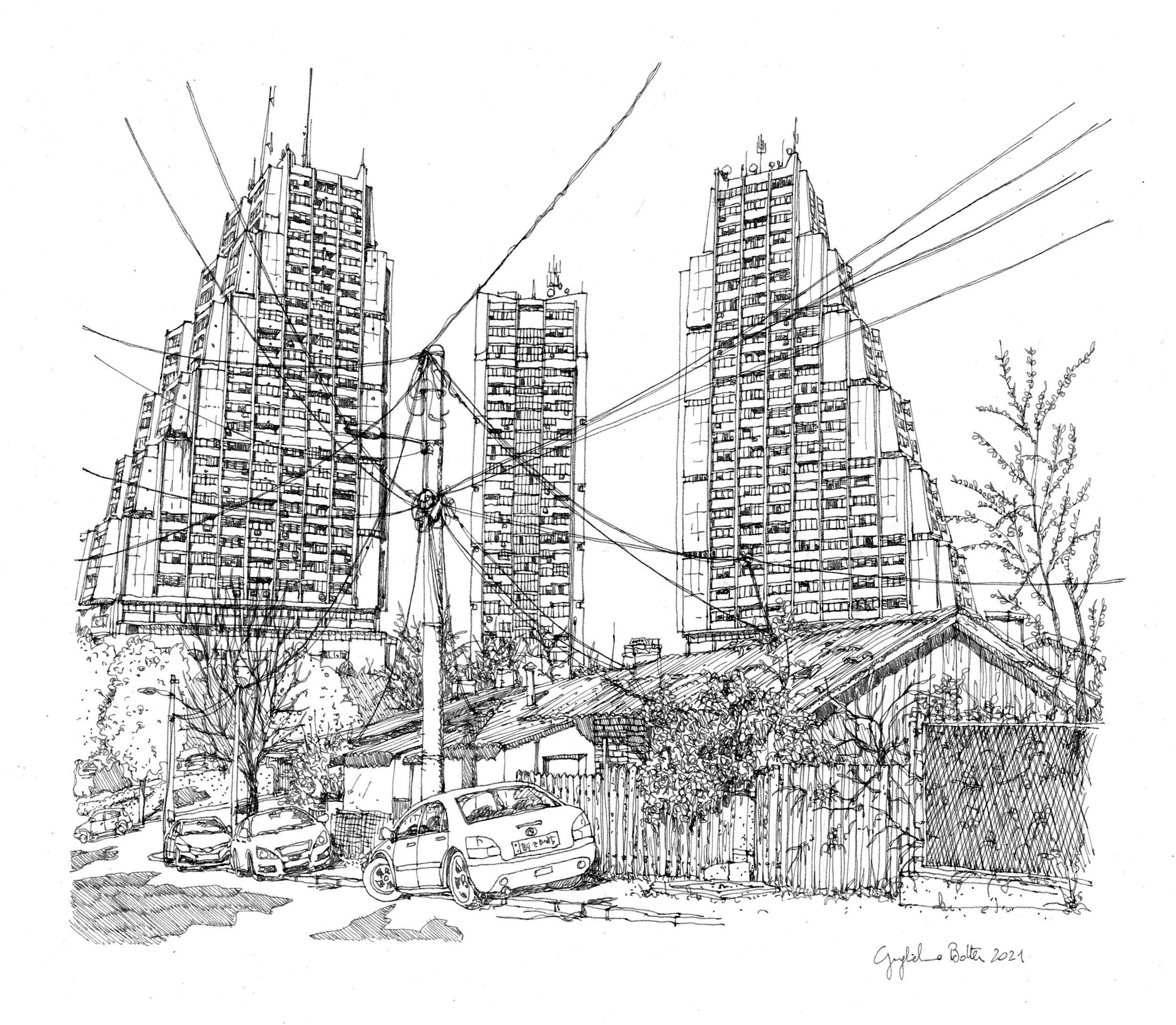Guglielmo Botter: An Ink Exploration of Urban Landscape
Congratulations to Guglielmo Botter for earning his place as a Winner in the Boynes Monthly Art Award [February 2024 Edition]!
Who are you?
I am an Italian-American citizen born on June 27th, 1966 in Treviso, Italy.
I began drawing with an ink pen when I was only 5 years old when my father brought home a rapidograph, commonly used by architects at that time, and I never stopped using it.
From the beginning I was drawing very quickly and directly using only the “china” and have never relied on pencil and eraser in my sketches.
My favorite subject was the urban landscape and in a few years I won most of the painting competitions dedicated to children of my age. My first solo exhibition, “Forty Drawings of an Eleven Year Old Boy” was held in 1977 in Treviso. The critics predicted a successful career for me, and since then, I have been collaborating with editors and authors on projects.
At the age of only 13 years, I got my most important childhood success when I was ranked first among 350,000 participants at the National Drawing Competition in Rome for my sketch of Treviso, which became an official stamp of the Italian Post on November 30th, 1980. Later that year, the Municipality of Treviso, in recognition of this success, invited me to exhibit my latest drawings of Treviso alongside those of my great-grandfather, Girolamo Botter, an artist who used the same technique a hundred years before. My family is important in the art field because for three generations, since 1890, Girolamo, Mario and Memi Botter (my father), saved and restored frescoes in the region of Veneto.
I decided to follow my family’s artistic heritage in a different branch by becoming an architect and in 1993, I graduated from the Istituto Universitario di Architettura (IUAV) in Venice.
“Mt. Wash (Grandview of Pittsburgh, PA)”
Ink
By Guglielmo Botter
Although I continued drawing while working as an architect, also because of the new tools, such as computers and CAD, I reserved this passion only for my free time and vacations. During my travels in Europe and America I was in the habit of taking my sketchbook with me and capturing my pictures of the most beautiful places I happened to visit.
After drawing my hometown for decades, in 1997, I decided to sketch it from a bird’s eye view. In those last years of the Millennium there was still no Google Map, so to understand the city’s shape from above, I had to climb the towers of the churches to take pictures and make sketches. No one had attempted to draw the city with a view of such complexity since 1813. After three and a half months of challenging work, the perspective map of Treviso was ready and introduced to the Press on November 30th.
From 2002 to 2004 I was a Teaching Assistant at the University of Architecture (Architectural Design Course 1, Prof. Arch.Claudio Panerari) and from 2006 to 2008, Professor of Techniques of Drawings and Surveying at the International University of Art at the Giudecca Island, Venice.
As a result of the economic crisis in Italy, I have rediscovered the pleasure of drawing, and that has now replaced my previous employment. My drawing skill has become my profession and now I am working in the United States of America where my art has been well-received.
In 2012 I decided to return to the U.S. where my mother, who was a painter, lived in the ‘50s and ‘60s. In Pittsburgh, Pennsylvania, I found the right place to continue my career in the field of art. In January 2013 I exhibited for the first time in the United States at GalleriE-Chiz in Shadyside, a prominent gallery in the city. In my drawings of the “Steel City” I combine the Italian aesthetic background with a family history rooted in the U.S. to envision the American urban landscape. I like the contrast between modern and historic buildings, and my signature style in black and white helps to blend the details of the contemporary era.
My drawings and my story have been featured often on local and national magazines and my first sketches of Pittsburgh were published on the cover of the Pittsburgh Post Gazette.
I exhibited in many US cities in the last 10 years… Pittsburgh, Lancaster and Harrisburg in Pennsylvania, Richmond and Norfolk in Virginia, Frederick in Maryland, Columbus and Jasper in Indiana, Lexington in Kentucky, Washington in DC, Kimberly in Wisconsin,
In Europe I exhibited in Germany in the cities of Burghausen, Freiburg and Altötting, in France and more recently in Belgrade, capital of the Republic of Serbia.
In 2012 I started to participate in International Art Contests on the web and I got dozens of prizes and Honorable Mentions.
“Belgrado House Complex Block 23”
Ink
By Guglielmo Botter
WHAT INSPIRED YOU TO UTILIZE drawing AS A MEDIUM?
I used color a lot as a child but my father, who was a professor at the Academy of Fine Arts in Venice, perhaps caught my predisposition for drawing and one day gave me an ink pen. From that moment on I found my way and I never stopped drawing. In order not to interfere with my personal artistic journey, dad avoided sending me to art high school and instead recommended classical studies. For this reason I never attended art schools. I believe that my father directed me towards the right path, the one that allowed me to win dozens of awards despite never considering myself a professional artist.
“Belgrado Kneza Milosa”
Ink
By Guglielmo Botter
How would you describe your ARTwork?
I could describe it as continuous research in the architectural field because, as my teachers at the University said, to know you have to observe and draw, as the great Masters did in the past. In reality, the in-depth observation of details and the thin line redrawing is a background that I built already in my youth, even before deciding on my professional future. I can say that I have an in-depth knowledge of every city I have designed and that I have sometimes valorised, with my art, places or buildings unknown even to their inhabitants. With my simple black and white sign I manage to enhance the contrast between ancient and modern, between large and small and between beautiful and ugly. My training as an architect has certainly contributed to refining my art...
“Belgrado Ministero Difesa”
Ink
By Guglielmo Botter
What do you hope to communicate to an audience with your work?
Often those who visit my exhibitions say they see their city with different eyes through my point of view, more attentive to the details and contrasts that characterize it, highlighted by the simple ink line and certainly influenced by my professional training.
“Belgrado The East Gate”
Ink
By Guglielmo Botter
Can you discuss the inspiration and thought process behind your winning work?
I believe that first of all there is the tenacity to face every difficulty in the name of passion for art. When I start a new project that will lead me to create 20 to 30 drawings of the chosen city, I let myself be carried away by the emotion of discovering it little by little and enhancing the emergencies that characterize it, without thinking about the economic implications of the operation, not always exciting. The collection of hundreds of drawings made in recent years in the United States and Europe repays me for the efforts made to travel and always discover new horizons. The cultural baggage that accompanies my artistic activity is worth much more than money.
“Ellicott City”
Ink
By Guglielmo Botter
Can you walk us through the technical steps of creating your winning work?
First of all, working mainly on urban landscapes, I take time to visit the city that will be my new project. I identify with its inhabitants, I walk and stop to admire even the lesser-known and spectacular places. I write down in my sketch book what attracts me most, I also take some photographs to study the best viewing angle to highlight the object of my next drawing. I draw on site using my trusty travel companion, the 0.4 mm thick ink pen, and a simple Canson sketchbook in the American format of 17 x 14 in. If security reasons do not allow me to create my work on site, then I create a series of digital photographs which I then use in my studio to create or finish the work.
“New York 9/11 Memorial Ground Zero”
Ink
By Guglielmo Botter
Can you talk about your biggest learning experience during the process of creating your work?
I believe that my long career in the field of art has confirmed that the motto "Nemo propheta in patria" is still valid today. Despite having worked as an artist in my city since I was a child, creating important iconographic works such as the Italian Post stamp which portrays a square in the city (at the age of 13); the bird's eye plan of Treviso in 1997, in the manner of the ancient landscape artists of the 16th century, such as Jacopo de Barbari for Venice, the redesign of both elevations of the Calmaggiore (Main Street), from Piazza Duomo to the Palazzo dei Trecento always in ink, I received the best appreciation far from my homeland. In the United States, in Germany, in the Czech Republic, in France and in Serbia I collected what I was missing in Treviso, economic and organizational support, hospitality and fame. The numerous prizes and recognitions obtained in the last 12 years in international competitions partly repay the indifference of the city institutions...
“New York World Trade Center”
Ink
By Guglielmo Botter
Can you discuss your biggest success since starting your artistic journey?
At just thirteen years old I was the national winner of the XXII Stamp Day, organized by the Ministry of Posts and Telecommunications on the theme "My city". My drawing of Piazza Pola prevailed over 350,000 works by young middle school artists and became a stamp of the Italian Republic. A victory that marked my destiny as an artist and which will remain, I believe, a unique event in my life. Many other first prizes have honored me in these fifty years of artistic career, but the stamp remains as a symbol of my art.
“Freiburg”
Ink
By Guglielmo Botter
Can you give us a piece of advice you wish you had known at the start of your career?
Maybe I should have listened to the advice that my mother, also a painter, repeated to me over and over again. I should have moved away from my city Treviso, medium-sized but provincial, to move towards more vital and modern realities. Until the economic crisis that forced me to review my life in 2012, I had always believed that the world was my city... The American adventure that arose from the need to rethink my future, reawakened in me the desire to emerge , work ever more intensely, transforming a moment of crisis into the best stimulus to bring me back to the "right path", the one marked in the past by my parents, both artists. Now I'm starting to think about my two daughters, to them I repeat my mother's advice, not to stop in just one place, whatever it may be, but to travel, experiment, get to know and appreciate everything that is good and beautiful in this world.
“Harrisburg Grand Staircase”
Ink
By Guglielmo Botter
What projects are you working on currently?
In April I will open my next solo exhibition in the city of New Castle, Pennsylvania, the result of an international selection made by the Hoyt Museum. I will be exhibiting 24 drawings in the lobby of UPMC Jameson Hospital in New Castle, PA, from April 20 to June 13, 2024.
What is your dream project or piece you hope to accomplish?
Due to my Italian-American origins, the project on the back burner is the creation of a double exhibition of drawings from Rome and Washington DC to be held in the two capitals that represent my home and my background...
“Harrisburg South 2nd Street”
Ink
By Guglielmo Botter
As a winner, do you have any advice for artists who want to submit to awards, competitions, residencies, etc.?
I think the obvious advice is not to be discouraged if you don't get recognition on the first try. Participation in international competitions is certainly a unique tool for verifying the attention that one's art receives from qualified critics, gallery owners and even spectators. Despite having obtained several important prizes, I remember with particular satisfaction a victory obtained with the popular vote, when, with a design from Belgrade, I outpaced the second place by 7000 preferences... For my part, however, there is the awareness that competing with works created only with ink sometimes does not give the desired results because it is a common belief that drawing is inferior to painting... Great then is the satisfaction when one of my drawings prevails in some competition!
Lastly, I like to ask everyone what advice they would give to their fellow artists, what is your advice?
Art is always poor... My father often said: "If you never make money in your life by drawing, then it means you were a true artist". In fact, most of the great artists did not make their fortune in life...
To view more of Guglielmo Botter










